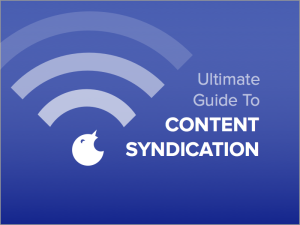Although we spend more time at work than anywhere else, surprisingly people often feel little connectivity to the vision and mission of their employer. One reason is that most company mission and vision statements simply don’t mean much to the great majority of employees. They tend to be created by consultants or executives who are overanalyzing each word and are choosing language that sounds like you have locked too many MBA’s in a room for too long.
The result – no one really cares and the words hang ominously on walls or flash across computer screens throughout the organization without truly connecting emotionally with people.
Now don’t get me wrong, having had the privilege of working with many of the world’s best companies, I have found that people have a great desire to feel connected to an organization and want to be a part of something larger than themselves. They want to make a contribution and a difference. It is just that the traditional framework most of us have been taught isn’t all that effective. And in truth, when you pull most executives aside they will admit that they are still a bit confused between the difference of a vision and a mission and are not excited or don’t feel vested in what has been created. The ultimate goal is pretty simple and can be framed in four questions:
- Who are we?
- What does winning look like in the future?
- How do we plan on getting there?
- How do I contribute?
The “Who Are We?” question has been getting a lot more attention lately. Maybe it is because there are many purpose driven companies that have done quite well and have received lots of attention, maybe it is because Millenials tend to put a higher value on it as they chose their employer or maybe our collective corporate conscience is evolving to appreciate purpose as a bigger part that should guide our actions. Whatever the cause, purpose work is hot and that is a very good thing. It’s being clear on the soul of your company and what gets you out of bed other than the profit motive. The key here though is that you have to really mean it for it to make a difference. Defining a purpose is one thing, but having it guide your decisions from strategic investments all the way to how you hire, train and evaluate and have it fuel your culture is a whole other thing. The difference between what you do here is the difference between actually having a purpose or having an initiative to define one that is more of a marketing campaign that will have limited long term impact. The “purpose thing” doesn’t sound that hard and people often reference companies like Whole Foods, Zappos or Southwest as examples to emulate. But it’s more like a Roger Federer forehand – it looks quite effortless but it took years of refinement and practice to have it look that good and be that effective.
The next critical piece is for everyone to know what winning looks like. This is where vision work often plays and gets esotheric more often than not. Think of it more as telling a compelling story. How do we see our competitive world changing in the next 3-5 years and how do we see ourselves winning in that world? That is less about a statement that everyone can remember or a few charts that show growth trajectories, but a story everyone can identify with, understand the essence of and can authentically communicate to others. As a test, tell the story of how you will win as a business in a clear and compelling way without power point support in less than two minutes to a colleague of yours. Let them give you feedback on how crisp and how compelling your story is?
After the story is clear and compelling you then have to outline “how we get there from here”. What organizational actions are we taking to get us to the future state and what uniquely sets us apart that allows us to get there ahead of the competition. The danger we often see here is that the large strategic initiatives can be quite plain in their articulation and don’t give enough guidance or differentiation. So while large strategic planks like Operational Efficiency, Customer Intimacy, Growth, People and Innovation are not inherently wrong, they only provide the baseline strategies that for the most part lead to continuous improvement efforts and keep you in the game. We have found that the best companies clearly call out what makes them unique and what will allow for differentiation in the marketplace. When people have clarity on that, they can shape their own goals to better align and support the unique advantage you are looking to gain.
Which does lead us to the last part, which is creating a line of sight from the organizational goals to the front line and making sure that connection is meaningful as well as emotionally compelling. It’s answering the “how do I contribute” question. In the end, this is where you are fighting for discretionary energy and clarity of action. According to Gallup surveys, in most companies you have about a quarter of the population actively engaged, just over half largely indifferent and the rest actively disengaged. What you are fighting for here is your unfair share of engagement as it will provide you with a competitive advantage. Once you have people in the game, they will put a conscious effort towards connecting their goals more meaningfully and finding ways to contribute that are not necessarily in the manual.
By being clear on what you stand for, by articulating an exciting future that people can connect with, by outlining the goals that uniquely let you get there and by finding connection points that let people feel a part of the journey, you will lay the groundwork for better strategy execution. By answering the 4 questions outlined, it will also make that whole “vision and mission thing” seem less academic and make the effort something that can connect your employees in a more meaningful way to your company and give you a leg up on the competition.
(235)
Report Post





